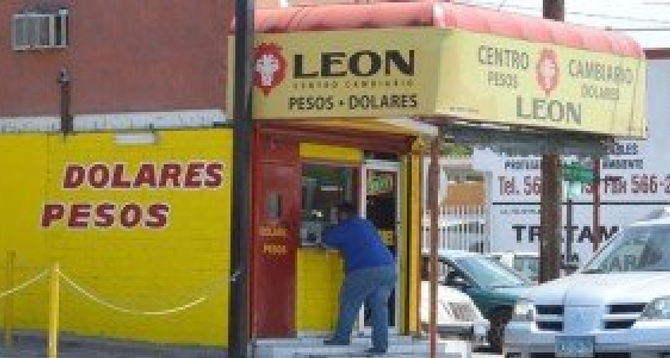 Facebook
Facebook
 X
X
 Instagram
Instagram
 TikTok
TikTok
 Youtube
Youtube

Several Tijuana casas de cambio ran out of dollars on Thursday, November 7, apparently the result of speculators betting that the value of the greenback against the Mexican peso was about to increase.
Virtually all exchange houses near the San Ysidro and Otay Mesa ports of entry, along with several on Boulevard Agua Caliente, exhausted their dollar supplies by mid-afternoon on Thursday, the daily newspaper El Sol de Tijuana reported.
While the speculation was not widespread, Carlos Leos Martínez, president of Centros Cambiarios Asociados, a trade group representing Tijuana's nearly 400 exchange houses, told El Sol that a few casa de cambio owners may be to blame for the temporary dollar scarcity.
"What could be happening with some colleagues is that they could be hoping to make more profit by taking advantage of this momentary increase in the exchange rate," Leos was quoted as saying in El Sol.
Exchange houses make money either by charging a commission for changing dollars to pesos or vice versa, or by setting a value for the two currencies different from the official bank rate so they can pocket the difference as profit.
Except for November 4, the value of the dollar versus the peso has been increasing steadily since October 30. The official bank rate value of a dollar on November 8 was 13.1627. According to El Sol, casas de cambio were charging on average 13.45 pesos for a dollar.
But not to worry, said Leos, because Tijuana "is very dollarized" and there is virtually no chance of a citywide scarcity. The city, he said, has sufficient dollars available to meet demand.


Several Tijuana casas de cambio ran out of dollars on Thursday, November 7, apparently the result of speculators betting that the value of the greenback against the Mexican peso was about to increase.
Virtually all exchange houses near the San Ysidro and Otay Mesa ports of entry, along with several on Boulevard Agua Caliente, exhausted their dollar supplies by mid-afternoon on Thursday, the daily newspaper El Sol de Tijuana reported.
While the speculation was not widespread, Carlos Leos Martínez, president of Centros Cambiarios Asociados, a trade group representing Tijuana's nearly 400 exchange houses, told El Sol that a few casa de cambio owners may be to blame for the temporary dollar scarcity.
"What could be happening with some colleagues is that they could be hoping to make more profit by taking advantage of this momentary increase in the exchange rate," Leos was quoted as saying in El Sol.
Exchange houses make money either by charging a commission for changing dollars to pesos or vice versa, or by setting a value for the two currencies different from the official bank rate so they can pocket the difference as profit.
Except for November 4, the value of the dollar versus the peso has been increasing steadily since October 30. The official bank rate value of a dollar on November 8 was 13.1627. According to El Sol, casas de cambio were charging on average 13.45 pesos for a dollar.
But not to worry, said Leos, because Tijuana "is very dollarized" and there is virtually no chance of a citywide scarcity. The city, he said, has sufficient dollars available to meet demand.
Comments